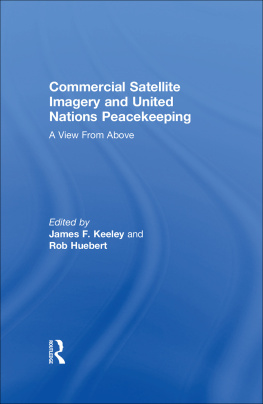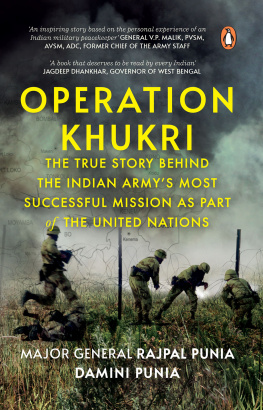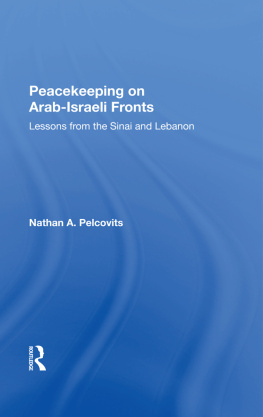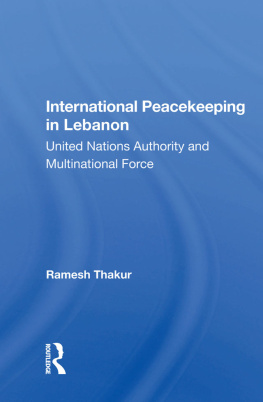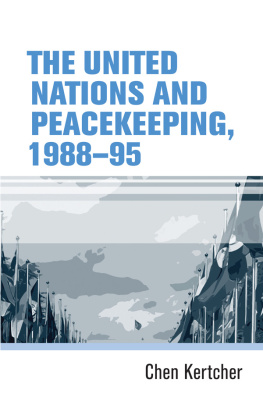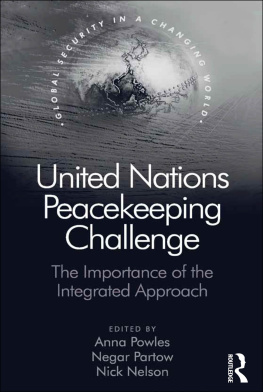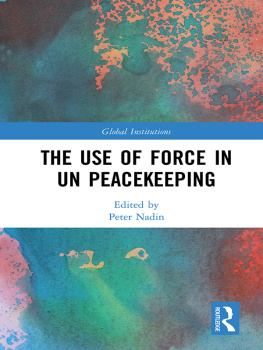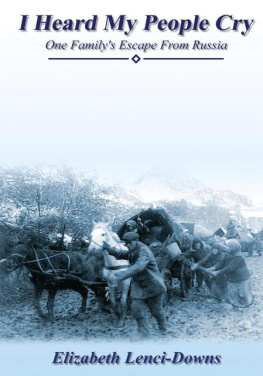COMMERCIAL SATELLITE IMAGERY
AND UNITED NATIONS PEACEKEEPING
To Meeta and Shabnam
First published 2004 by Gower Publishing
Published 2016 by Routledge
2 Park Square, Milton Park, Abingdon, Oxon OX14 4RN
711 Third Avenue, New York, NY 10017, USA
Routledge is an imprint of the Taylor & Francis Group, an informa business
Copyright 2004 James F. Keeley and Rob Huebert
All rights reserved. No part of this book may be reprinted or reproduced or utilised in any form or by any electronic, mechanical, or other means, now known or hereafter invented, including photocopying and recording, or in any information storage or retrieval system, without permission in writing from the publishers.
Notice:
Product or corporate names may be trademarks or registered trademarks, and are used only for identification and explanation without intent to infringe.
British Library Cataloguing in Publication Data
Commercial satellite imagery and United Nations
peacekeeping : a view from above
1. United Nations - Congresses 2. National security - Canada
- Congresses 3. Artificial satellites in remote sensing -
Congresses 4. Military surveillance - Congresses 5. Remote
sensing equipment industry - Military aspects - Congresses
6. Peacekeeping forces - Congresses 7. Security,
International - Congresses 8. Canada - Military policy -
Congresses
I. Keeley, James F. II. Huebert, Robert N. (Robert Neil),
1960-
327.172
Library of Congress Cataloging-in-Publication Data
Keeley, James F.
Commercial satellite imagery, and United Nations peacekeeping : a view from above / James F. Keeley and Rob Huebert.
p. cm.
Includes bibliographical references and index.
ISBN 0-7546-1072-1
1. Space surveillance. 2. Artificial satellites in remote sensing--Political aspects. 3. National security. I. Huebert, Robert N. (Robert Neil), 1960- II. Title.
UG1520.K44 2003
327.12--dc22
2003063652
ISBN 9780754610724 (hbk)
CONTENTS
James F. Keeley and Rob Huebert
Ram Jakhu
Mryka Hall-Beyer
Jean-Pierre Paquette
Alvin L. Hanks and Richard C. Gorecki
C. Vincent Tao and Q.S. (Bob) Truong
Steve Adam
James F. Keeley
James F. Keeley
Alex Morrison
Michel Bourbonnire and Louis Haeck
Robert S. Macleod
Corey Michael Dvorkin
Dana G. Clarke
Ulric Shannon
Rob Huebert
James F. Keeley and Rob Huebert
Steve Adam is a Senior Data Analyst with Canadian Geomatics Solutions, Ltd., Calgary, Alberta, Canada.
Michel Bourbonnire is Professor of International Law at the Royal Military College, Kingston, Ontario, Canada.
Dana G. Clarke is a Major in the Canadian Forces, Section Head of Plans, Strategy and Doctrine in the Directorate of Space Development, Department of National Defence, Ottawa, Ontario, Canada.
Corey Michael Dvorkin is an analyst in the Directorate of Western Hemisphere Policy, Department of National Defence, Ottawa, Ontario, Canada.
Richard C. Gorecki is Manager, Marketing and Client Support, with Pixxures Canada, Ltd., Calgary, Alberta, Canada.
Louis Haeck is Adjunct Professor at lEcole Polytechnique, University of Montreal, and at the Royal Military College, Kingston, Ontario, Canada.
Mryka Hall-Beyer is an Assistant Professor in the Department of Geography, University of Calgary.
Alvin L. Hanks is a founder and Principal with Chesapeake Analytics.
Rob Huebert is an Associate Professor in the Department of Political Science and Associate Director of the Centre for Military and Strategic Studies, University of Calgary.
Ram Jakhu is a Professor of International Law at McGill University, and Director of the McGill Centre for the Study of Regulated Industries.
James F. Keeley is an Associate Professor in the Department of Political Science and a Resident Fellow of the Centre for Military and Strategic Studies, University of Calgary.
Robert S. Macleod is a Lieutenant-Colonel in the Canadian Forces, with the North American Aerospace Defence Command, Colorado Springs, Colorado, U.S.A.
Alex Morrison is the Former President of the Lester B. Pearson Canadian International Peacekeeping Training Centre, Cornwallis Park, Clementsport, Nova Scotia, Canada.
Jean-Pierre Paquette is President of ImStrat Corporation, Carleton Place, Ontario, Canada.
Ulric Shannon is in the Regional Security and Peacekeeping Division, Department of Foreign Affairs and International Trade, Ottawa, Ontario, Canada.
C. Vincent Tao contributed to the conference while an Assistant Professor in the Department of Geomatics Engineering, University of Calgary. He is currently holder of the Canada Research Chair in Geomatics and Associate Professor of Geomatics Engineering in the Department of Earth and Atmospheric Science, York University, Toronto, Canada.
Q.S. (Bob) Truong is a Program Manager in the Safeguards Support Program of the Canadian Nuclear Safety Commission, Ottawa, Ontario, Canada. He has a PEng in Mechanical Engineering from the University of Toronto.
The conference which generated the chapters in this volume arose from a recognition of the rapidly developing interest among both international organizations and non-governmental organizations in the possibilities for the use of increasingly available, and increasingly capable, commercial satellite imagery in a variety of roles typically associated with peace-keeping and similar humanitarian operations. Given Canadas significant and complex involvement in the field of satellite imagery as a producer and consumer of this imagery, and as a home to a significant associated commercial industry, its historically strong connection to UN peacekeeping operations which have been subject to a tide of criticism and introspection, and the significance of its industrial, technological, military and political ties to the United States, the relationship of CSI to Canadas security requirements, and particularly with reference to UN peacekeeping, seemed a natural and important, if large, area of inquiry. The release of the Brahimi Report (Report of the Panel on United Nations Peace Operations) shortly before the conference provided at least an indirect confirmation of this.
In organizing the conference, we tried to bring together a variety of concerns and perspectives: technical, commercial-industrial, political, legal and military. We drew on a wide range of individuals academics from a variety of disciplines, government personnel (including military), and from the private sector. We are particularly grateful for the interest shown by our private-sector participants in the conference.
A number of people and organizations contributed significantly to the conference, in terms of support, time and money. We are grateful for their interest and encouragement. The Centre for Military and Strategic Studies at the University of Calgary, headed by David Bercuson, provided essential institutional support and drive, and the Centres Administrative and Budget Officer, Shelley Wind, gave us crucial back office support, as did the Research Associate and Events Co-ordinator, Nancy Pearson-Mackie. A number of graduate students at the Centre contributed their services as rapporteurs and assistants: Steven Heard, Chris Bullock, Mike Schlueter, Ray Szeto, and above all Dylan Kirk. Dr. Ron Keith and Dr. John Ferris, of the Departments of Political Science and History respectively, served as panel chairs for the conference, as did Dr. Hall-Beyer. Kari Roberts of the Department of Political Science and Jillian Dowding of the Centre for Military and Strategic Studies prepared the index. We wish to acknowledge the support of the Departments of National Defence and of Foreign Affairs and International Trade, and the North American Aerospace Command, which contributed paper-givers (in an individual capacity). We also wish to thank Anne Keirby of Ashgate Publishing for her interest, support and patience.

